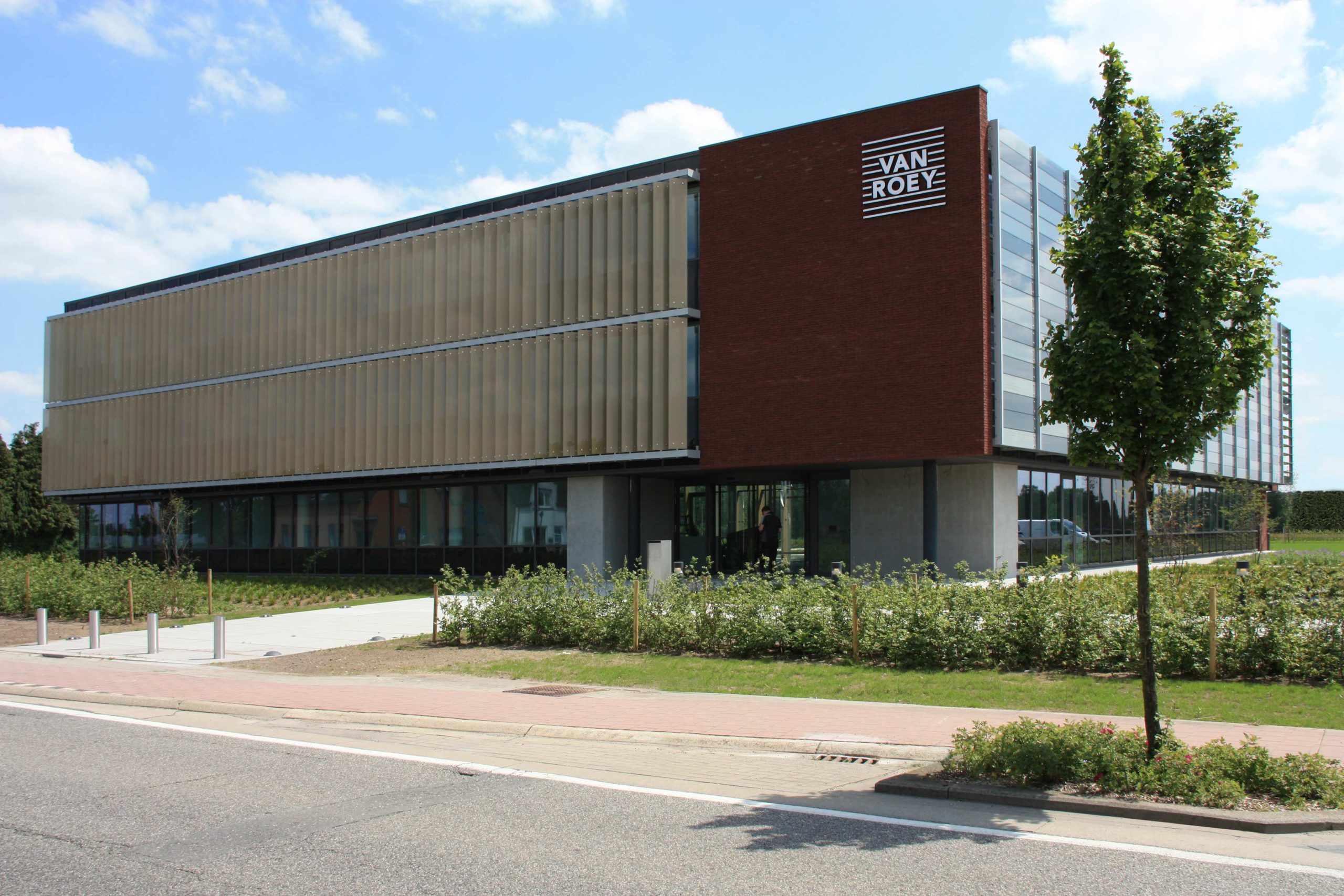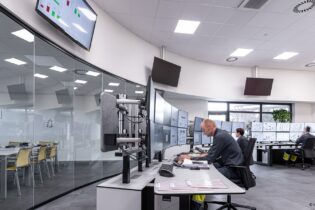Van Roey offices
Rijkevorsel, Belgium, Europe
| Total technical installations cost: | € 1.800.000,00 excl. vat |
| Total construction cost: | € 7.000.000,00 excl. vat |
| K Level / Energy class : | 25 |
| E Level: | 22 |
| Certification: | NZEB (Nearly Zero Energy Building) |
Project description:
Van Roey’s new office was designed with sustainability as a starting point. By working together in a multidisciplinary way from the start of the project, the combination of challenging architecture and far-reaching sustainability was made possible.
The result is a NZEB office building that is heated and cooled without using traditional solutions such as boilers or cooling machines. The building houses landscape offices, individual offices, one atrium for 100 people, a refectory/lounge for 60 people and a data center. The building is characterized by high-performance sun protection. This is controlled on the basis of the position of the sun.
By adding a geothermal seasonal storage system, in which solar heat from the offices is stored passively in the subsurface, it is possible to extract heat from this during the heating season in a renewable manner and inject it into the building. The delivery system in the building is mainly concrete core activation, supplemented by some zones with underfloor heating. These low temperature systems allow optimal efficiency of the heat pumps and passive cooling.
The hygienic ventilation is demand-driven in function of the air quality in the different zones of the building but is only released after the presence detection is activated.
The building envelope has also been adapted to achieve the best possible balance between the heat demand and the cooling demand.
The lighting in the offices is done entirely with high-performance LED devices that are individually programmable for maximum flexibility. A system of daylight control will reduce consumption even further by dimming the lighting devices according to the daylight entering the building. The lighting is only released after a manual action. The roof is maximally covered with PV panels for the generation of green electricity.




















